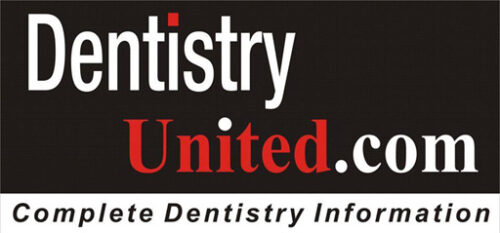Glucagon-like peptide-1 receptor agonists (GLP-1RAs), including semaglutide and tirzepatide, have rapidly reshaped the management of type 2 diabetes and obesity. Their ability to lower blood glucose, reduce body weight, and modulate appetite has been hailed as a therapeutic breakthrough.
But as these agents move from niche to mainstream, clinicians across disciplines are discovering their broader ripple effects. Among dentists, a new phrase has entered conversations—“Ozempic teeth”—reflecting growing concern about the oral consequences of long-term GLP-1RA therapy.
This commentary synthesises emerging evidence and provides a framework for how dental practitioners can recognize, prevent, and manage oral complications in patients using GLP-1RAs.
Mechanistic Pathways: From Stomach to Mouth
GLP-1RAs act primarily by slowing gastric emptying, reducing appetite, and supporting insulin secretion. While these changes underpin their clinical benefits, they also create downstream risks relevant to oral health:
- Gastroparesis and reflux: A subset of patients (around 5%) develop clinically significant gastric stasis. This can increase nausea, vomiting, or reflux, exposing enamel to repeated acid challenges.
- Dry mouth (xerostomia): Case reports and pharmacovigilance data have linked semaglutide and related agents to reduced salivary flow. Dry mouth diminishes the oral cavity’s protective buffering and antimicrobial capacity.
- Dehydration: Appetite and thirst suppression may lead to lower fluid intake, compounding xerostomia.
- Nutritional shifts: Patients on GLP-1RAs may alter dietary habits, sometimes reducing intake of essential vitamins and proteins, with potential consequences for periodontal and mucosal health.
Clinical Presentations in Dental Practice
Reports from both the literature and real-world case series describe a consistent set of oral complications:
- Persistent xerostomia, with or without altered taste
- Halitosis linked to reduced salivary cleansing
- Enamel erosion and dentine hypersensitivity following recurrent reflux or vomiting
- Accelerated caries due to impaired remineralisation and dry oral environment
- Cracked or weakened teeth in isolated cases, potentially reflecting combined erosion and mechanical fragility
Interestingly, not all findings are negative. Preclinical studies and one human cohort suggest that GLP-1RAs may have anti-inflammatory and bone-protective effects on periodontal tissues and peri-implant health. Patients using GLP-1RAs demonstrated less marginal bone loss around implants compared to those treated with insulin or metformin. While preliminary, these findings remind us that drug effects can be both risk-enhancing and protective, depending on context.
Practical Guidance for Dental Professionals
- History and disclosure
- Ask explicitly about GLP-1RA use, including duration and dosing. Many patients may not volunteer this information unless prompted.
- Scheduling and risk assessment
- Defer elective procedures if patients report active nausea, vomiting, or reflux—particularly in the first months of therapy.
- For sedation, prioritise local anaesthesia or minimal sedation to reduce aspiration risk in those with delayed gastric emptying.
- Preventive strategies
- Address dry mouth with hydration counselling, salivary substitutes, sugar-free sialagogues, and high-fluoride regimens.
- After vomiting, instruct patients to rinse with water or bicarbonate before brushing to protect softened enamel.
- Encourage balanced nutrition, ensuring adequate calcium, vitamin D, and protein intake.
- Interdisciplinary communication
- Collaborate with endocrinologists when oral side effects are severe. Adjustments in dosing, timing, or alternative therapy may be possible.
A Shared Responsibility Is The Way Ahead
GLP-1 receptor agonists represent a triumph of modern pharmacology. For millions of patients, they reduce cardiovascular risk, improve glycaemic control, and offer sustainable weight loss. Yet these benefits come with oral health implications that must not be overlooked.
For dentists, the path forward is one of awareness and proactive care: screening, patient education, preventive intervention, and medical collaboration. By integrating these steps into everyday practice, we can ensure that the promise of GLP-1RAs is not overshadowed by preventable oral morbidity.
What remains urgently needed are long-term clinical studies clarifying the incidence of caries, periodontal changes, and implant outcomes in this population. Until then, vigilance at the dental chair is our best safeguard.
Key References
- Azzi J, et al. (2024). Semaglutide-induced hyposalivation: case series. Journal of Stomatology, Oral and Maxillofacial Medicine. [PubMed PMID: 38206684]
- Chen R, et al. (2024). Otolaryngologic adverse events with GLP-1 receptor agonists: FAERS database analysis. Diabetes Therapy. [PubMed PMID: 39936458]
- O’Neill J, et al. (2023). Periodontal and peri-implant implications of GLP-1 receptor agonists: A review. Journal of Periodontology. [PubMed PMID: 40348599]
- Ozone T, et al. (2020). Liraglutide suppresses periodontitis progression in a rat model. Journal of Diabetes Investigation, 11(6), 1469–1479. [PMC7695495]
- Oral Health Group (2023). Weight loss medications and their effects in the oral cavity.
- Verywell Health (2024). Ozempic teeth: Emerging dental concerns.

Author: Dr. Syed Nabeel, BDS, D.Orth, MFD RCS (Ireland), MFDS RCPS (Glasgow), is a clinician-scholar whose career spans over two decades at the intersection of orthodontics, neuromuscular dentistry, and digitally integrated diagnostics. As Clinical Director of Smile Maker Clinics Pvt. Ltd., he has pioneered a philosophy of care rooted in anatomical precision, occlusal neurophysiology, and contemporary AI-enhanced workflows. A Diplomate in Orthodontics from Italy and an alumnus of advanced programs at Various International Universiteis , Dr. Nabeel brings a globally benchmarked clinical acumen to the nuanced management of temporomandibular disorders, esthetic rehabilitation, and algorithm-guided orthodontics.
In 2004, he founded DentistryUnited.com, a visionary platform connecting over 40,000 dental professionals through peer learning and collaborative dialogue. His academic drive led to the launch of Dental Follicle – The E-Journal of Dentistry (ISSN 2230-9489), a peer-reviewed initiative now indexed in EBSCO, fostering interdisciplinary scholarship across clinical domains.
A prolific educator, he has contributed to UGC and national broadcast media as a subject expert and regularly speaks at scientific forums, favoring small-group, discussion-based formats that emphasize clinical realism over theoretical abstraction. His ethos remains steadfast: knowledge, when shared freely, multiplies in value. Dr. Nabeel continues to shape the future of dentistry through research, mentorship, and his enduring commitment to elevating practice standards in India and beyond.

